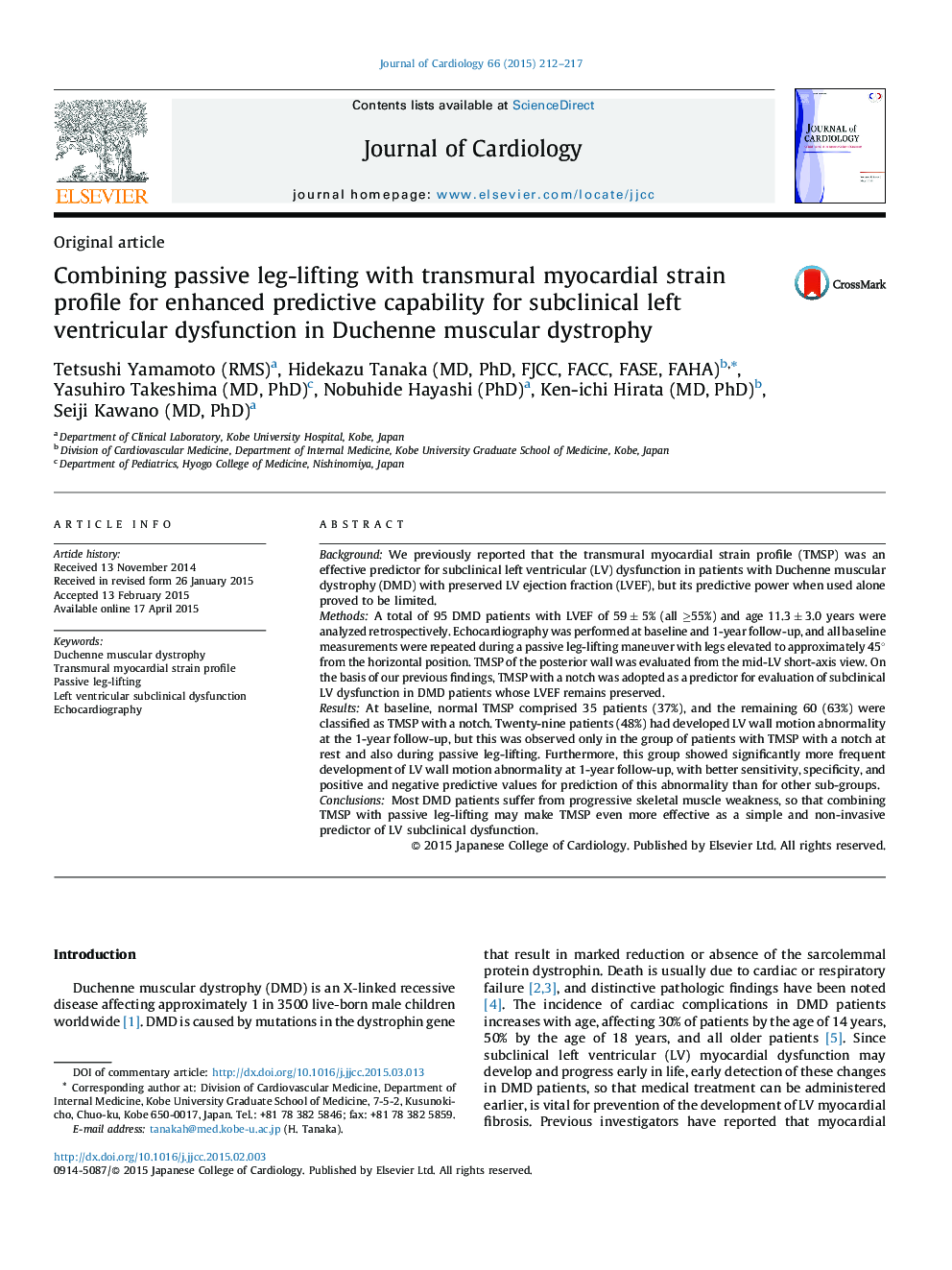| Article ID | Journal | Published Year | Pages | File Type |
|---|---|---|---|---|
| 2962881 | Journal of Cardiology | 2015 | 6 Pages |
BackgroundWe previously reported that the transmural myocardial strain profile (TMSP) was an effective predictor for subclinical left ventricular (LV) dysfunction in patients with Duchenne muscular dystrophy (DMD) with preserved LV ejection fraction (LVEF), but its predictive power when used alone proved to be limited.MethodsA total of 95 DMD patients with LVEF of 59 ± 5% (all ≥55%) and age 11.3 ± 3.0 years were analyzed retrospectively. Echocardiography was performed at baseline and 1-year follow-up, and all baseline measurements were repeated during a passive leg-lifting maneuver with legs elevated to approximately 45° from the horizontal position. TMSP of the posterior wall was evaluated from the mid-LV short-axis view. On the basis of our previous findings, TMSP with a notch was adopted as a predictor for evaluation of subclinical LV dysfunction in DMD patients whose LVEF remains preserved.ResultsAt baseline, normal TMSP comprised 35 patients (37%), and the remaining 60 (63%) were classified as TMSP with a notch. Twenty-nine patients (48%) had developed LV wall motion abnormality at the 1-year follow-up, but this was observed only in the group of patients with TMSP with a notch at rest and also during passive leg-lifting. Furthermore, this group showed significantly more frequent development of LV wall motion abnormality at 1-year follow-up, with better sensitivity, specificity, and positive and negative predictive values for prediction of this abnormality than for other sub-groups.ConclusionsMost DMD patients suffer from progressive skeletal muscle weakness, so that combining TMSP with passive leg-lifting may make TMSP even more effective as a simple and non-invasive predictor of LV subclinical dysfunction.
